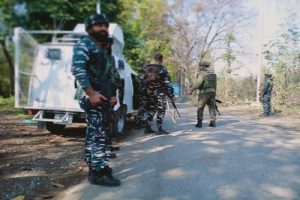On the year 1979, a six-year-old boy named Etan Patz from SoHo, Manhattan, left home for school and disappeared on the way to the bus stop. Decades later after legal hearings, Patz was declared murdered following abduction on the same day he went missing.
The tragic incident prompted the International Missing Children’s Day on 25 May, the day the boy disappeared, which is dedicated to mass awareness on missing children and figuring the best practices that can be adopted to combat the issue.
Incidentally, on this very day of 25 May in the year 2009, West Bengal in India was terribly hit by the cyclone Aila which left a huge portion of the state devastated. As a consequence countless number of children and young adults started going missing.
A panel discussion was held live on 25 May via the official Facebook page of 92.7 BIG FM, exploring the grave issue of missing children. The expert panelists included Abhik Bhattacharya, media head, CRY; Bipasha Roy, ex-member, Juvenile Justice Board, Kolkata; Ananya Chakraborti, chairperson, West Bengal State Commission for Protection of Child Rights; Susovan Si, senior programme coordinator, Childline India Foundation and Ruchira Goswami, faculty, NUJS. The session was moderated by Big FM radio jockey Nilanjan.
A wide range of factors can be responsible for children going missing. Roy categorised them as endogenous, where family is involved or the child is forced to run away for domestic violence and exogenous, when kidnapping takes place.
Often to cope with acute poverty, the family sells the child as domestic help, from where he/she can get trafficked and missing. Girls are shown a happier picture of life outside their villages and thus trafficked.
A child may also run away voluntarily from feeling neglected. There are even cases when the parents abandon their child. Chakraborti related one such case of a girl, now living at a Jalpaiguri home, who was left locked by her father, at the age of five, inside a train toilet. She was rescued and is now well established.
The kids that are trafficked are mostly used for sex and begging. Roy claims that often the babies that we see clinging to women beggars are actually rented. They are given sleeping pills which explain why most of the times they are sound asleep.
According to Goswami, children also go missing from the thrilling idea of running away from home. But they don’t understand that the actual problem starts after running away. Schools have an important role to play in making children understand the risks involved in running off and suggest better alternatives.

She stressed the necessity to include children in the process of mass awareness regarding missing children rather than limiting the discussions amongst adults. Attention must be given to the thought process of the child, assessing the reasons behind their running-off. The discussions must start from home and extend to the community level.
West Bengal, Madhya Pradesh and Delhi are said to be the most vulnerable areas in terms of child trafficking in India. Establishing hope against a morbid report that states around 174 kids go missing every day in India and 15.3 per cent of them are from West Bengal, Chakravorty said that West Bengal is also the state where most reporting of trafficking cases and consequently arresting of the criminals take place. The police address the problems most proactively and promptly.
There are some NGOs that work solely for reunification of missing children by following the near impossible task of identifying addresses of those children who doesn’t have the ability to locate them. This is done by following an extensive process of gathering clues from very little or no information.
Chakravorty, who knows one such organisation named Kishalay Home, has sent almost 100 kids home in the last two years. One of them was reunified with his family 35 years later. When the reunification happened, the whole village came to receive him.
Si urged all to call immediately at 1098 from the moment a child goes missing. The service is active for 24 hours. Another portal named www.trackthemissingchild. gov.in is also highly active about the issue.
Talking about the problems involved in reporting, Si shared another such recovery story where they had to proceed with almost no information. A 13-year-old girl from West Bengal was reported missing for 15 days. The parents could say nothing except the fact that she was at her aunt’s place. A place was traced in the Bihar-Nepal border area and a contact number was tracked with the help of West Bengal CID department.
The number was confirmed by Bihar and the police superintendent was contacted. He formed a quick response team with Childline, which started closely following the number which kept changing location in every 15 minutes unless it was finally traced from a place that dealt with human trafficking. Not only was the girl rescued but another victim of same age, also from West Bengal, was identified. When the girl was reunified with her parents, they said that they didn’t have any idea that something like this has happened to her.
Unraveling the heinous pictures of the racket of slave marriage, Chakravorty said that it started from Haryana which was infamous for female infanticide. Since the sex ratio got skewed, traffickers started looking for girls from poorer states. They would approach parents and ask their daughters for marriage without demanding any dowry.
The poor parents would happily agree. After marriage, the girls were taken to Haryana and couldn’t be traced anymore. They were made to work throughout the day in crop fields and sexually exploited at night by several men. After she had been enough exploited, she was further sold off to an even poorer family. Though the crime rate has dropped a bit in Haryana, a similar racket is now operative in Kashmir.
Ray mentioned the different programmes that are active throughout the state such as Village Child Protection Committee which has representatives in every level from school children and principals to hospital heads and panchayat pradhans among others. The committee points out the vulnerable pockets for trafficking and works there for its eradication.
The Swayangsiddha Programme at South 24 Parganas has started an innovative initiative of sharing of secrets where children are allowed to drop in a box a message on whatever is going on in their minds or bothering them. This has brought to light numerous trafficking cases which are then being addressed and stopped.
The Chetna Programme initiated by the Barracpore police commission has a team that reaches to schools, colleges and various other communities to promote mass awareness about the issue of missing children.
Sharing one of the success stories, Chakravorty related her experience on how one of her documentaries helped a family to find their child. One of the episodes from a short series that she was making in 2000 for Delhi Doordarshan was on the children living in railway stations.
While working with them, one child painfully recalled to her how he couldn’t bear watching his alcoholic father beating up his mother every day. He left home but misses his mother and wants to see her again.
His father saw the broadcast and was so touched that he came to Delhi, found his boy and took him home. “As a documentarian this was the biggest award I could have received than any other accolades, recognitions or critical acclaims,” she said.













